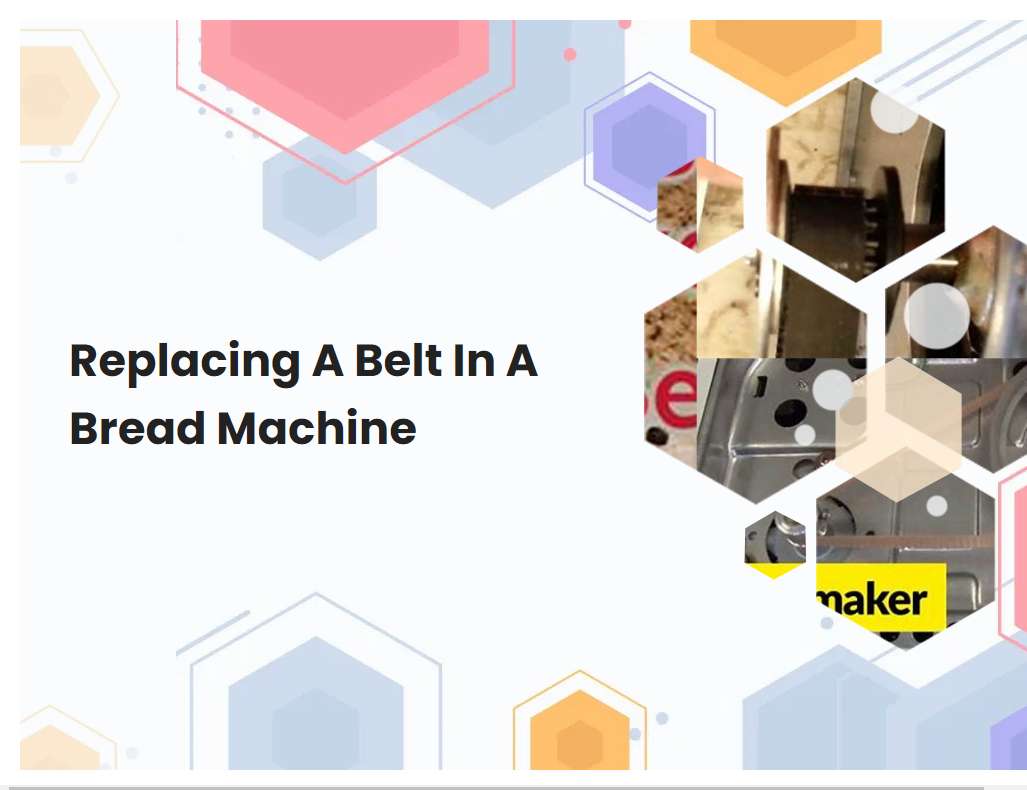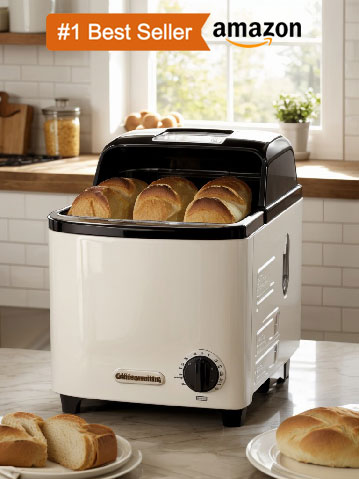Replacing A Belt In A Bread Machine
Replacing a belt in a bread machine can be a simple task that can help extend the life of the machine. Bread machines are an essential appliance for many individuals who enjoy making fresh bread at home. Replacing the bread machine belt is a simple procedure that can be done in a few steps with the right tools.

Identify the type and size of belt needed for the bread machine.
When it comes to selecting the correct belt for a bread machine, it is important to first identify both the type and size of belt needed. The most common type of belt used in a bread machine is a round belt, which is typically made of rubber or leather. The size of the belt is determined by the size of the pulley that the belt is wrapping around.
It is important to select a belt that has the right outer diameter, inner diameter, and width. Measurements should be taken from the existing belt or from the manufacturer's specifications. Once the measurements have been taken, the correct belt size can be determined by referencing a standard belt sizing chart. It is important to note that the size of the belt may vary depending on the specific make and model of the bread machine.
Disconnect the machine from the power source before starting the repair.
Before starting any repair on a machine, it is important to disconnect the machine from its power source. This ensures that the machine cannot be accidentally switched on while working on it, which can be very dangerous. To disconnect the machine, first shut down the power switch, then unplug the electrical cord from the wall outlet.
If the machine is plugged into a surge protector, make sure to unplug the surge protector from the wall outlet as well. After disconnecting the power source, it is safe to proceed with the repair. Make sure to reconnect the power source when finished with the repair for proper functioning of the machine.
See also: How To Make Wheat Bread In A Bread Machine
Refer to the machine's user manual for instructions on how to replace the belt.
Replacing the belt on your machine can be a simple process as long as you follow the instructions in the user manual. First, you will need to locate the belt tensioner and loosen the tension on the belt. Then, remove the belt from the pulleys, making sure to note how it was routed before it is removed.
After the belt has been removed, you can measure and purchase the correct replacement belt. Once you have the new belt, you will need to route it around the pulleys and onto the belt tensioner. Once it is on, you will need to adjust the tensioner to properly secure the belt. Finally, make sure that all of the pulleys are secured and that there are no signs of binding or slipping. Following these steps will ensure that you have correctly replaced the belt and that your machine is running optimally.
See also: What Does Hhh Mean On Bread Machine
Carefully remove the existing belt from around the pulleys.
To remove an existing belt from around the pulleys, it is important to proceed with caution. First, the tension should be released from the pulleys by either loosening the tensioner or adjusting the motor mount. Once the tension has been released, the belt can be carefully maneuvered off of the pulleys, one at a time, using a flat-head screwdriver or another tool.
The belt should be pulled until it is completely off of the small diameter grooves of the pulleys. Once the belt has been removed, the pulleys should be inspected for signs of wear or damage. If any damage is found, the pulleys should be replaced before installing the new belt.
See also: Difference Between Bread Machine Yeast And Yeast
Check the pulleys and clean them if necessary.
Checking the pulleys is a crucial step in maintaining a well-functioning system. It is important to inspect the pulleys regularly to ensure they are clean and in good working order. If the pulleys become clogged with dirt, dust, and debris, they can become stuck and cause the system to malfunction.
To check the pulleys, visually inspect them for any signs of wear and tear or visible dirt. If needed, clean the pulleys with a soft cloth to remove dirt and debris. Be sure to use a lubricant if necessary to ensure the pulleys are in top working condition. Additionally, check for any cracks or other signs of damage that may need to be replaced. Regularly inspecting and cleaning the pulleys is an important step in keeping a system running smoothly and efficiently.
See also: Different Types Of Banana Bread In Bread Machine
Align the new belt onto the pulleys and attach it securely in place.
To align the new belt onto the pulleys, first loosen the tensioner and idler pulleys. Next, align the grooves of the belt with the pulleys and carefully guide it around the pulleys. Make sure to check for the correct belt direction and ensure that all the pulleys are in line.
Once the belt is in place, adjust the tensioner and idler pulleys to ensure that the belt is properly tensioned and will not slip. Finally, secure the belt firmly in place using a screwdriver or wrench to tighten the fastening bolts. This should ensure that the belt is properly aligned and will not slip or vibrate during use.
See also: How To Make Burger Buns Bread Machine
Test the new belt to ensure it is correctly installed and turning properly.
To test the new belt, it is important to first check that it is properly installed and tensioned. Start the engine and allow it to run for a few minutes at idle, then increase the speed gradually and listen for any unusual noises or vibrations coming from the belt. If everything sounds normal, then increase the speed further and feel for any slipping of the belt.
Make sure to check both sides of the belt for even tension. If the belt is slipping, then it may need further adjustment. Lastly, observe the belt while the engine is running to make sure it is turning properly without any obstruction or misalignment. If any problems are detected, then it is important to resolve them before continuing use.
Replace any covers or panels that were removed during the repair.
After the repair was completed, it was essential to replace any covers or panels that were removed during the process. This was necessary to ensure that the device was once again in proper working order and all of its components were correctly secured. All panels were checked for proper fitment and secured with the appropriate screws and other fasteners.
Any worn or damaged panels were replaced with new ones, and all the screws and fasteners were tightened to the manufacturer's specifications. All of these steps were taken to ensure that the device was fully functional and safe for use.
Re-connect the power source and test the machine to make sure it is working correctly.
After re-connecting the power source, it is important to test the machine to make sure it is functioning properly. Begin by checking all wires and connections to ensure they are secure and properly in place. Then turn the machine on and test it for basic functionality such as powering up, running a program, and making sure all controls are responding correctly.
Finally, observe the machine for any unusual sounds or behaviors that could signal an issue. Throughout the testing process, make sure to take detailed notes in case any issues arise that need to be addressed. Once the machine is running smoothly, you can be sure that it is working correctly.
Make sure to store any spare parts or tools in a safe and dry place for future use.
It is important to store any spare parts or tools in a safe and dry place for future use. This will ensure that whenever they are needed, they can be easily located and retrieved. Storing them in a safe place will also protect them from damage or loss due to fire, water, or theft.
It is beneficial to choose an area that is free from moisture, dust, and other contaminants that can damage the parts or tools. It is also important to label the storage containers clearly so that anyone can identify what type of parts or tools are stored inside. Additionally, it is useful to keep a detailed inventory of the parts and tools stored in the area to make sure nothing has been lost or misplaced. With proper storage and organization, any spare parts or tools can be easily found and used when necessary.





